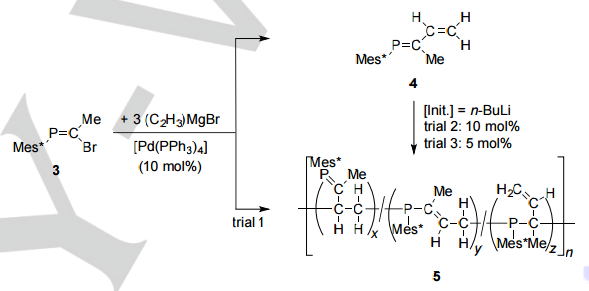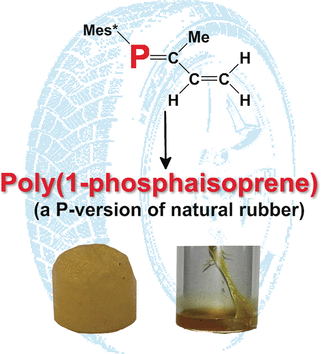The University of British Columbia的研究人员实现了下述类似丁二烯含P=C-C=C化合物的聚合反应,但是在聚合过程中,P=C部分较少参与聚合,主要由C=C部分形成弹性体骨架,从而使P=C部分成为该弹性体材料日后进行改性的重要活性位点,比如参与其它反应进行交联或者其它改性,或者与金属离子(比如金)进行配位,制备催化剂等。关于这种材料的用途,您可以尽情想象。


Abstract
Macromolecules derived from 1,3-dienes, such as polyisoprene (or natural rubber), are of considerable importance in polymer science. Given the parallels between P=C and C=C bonds, the prospect of polymerizing P-containing 1,3-dienes, such as 1-phosphaisoprene, is intriguing due to the unique chemical functionality imparted by the heavier element combined with their structural relationship to natural rubber. Herein, we report the synthesis, characterization and coordination chemistry of the first polymers derived from Mes*P=CR−CH=CH2 (Mes*=2,4,6-t-Bu3C6H2; R=H, Me). In the case of 1-phosphaisoprene (R=Me), the monomer is isolable and its anionic polymerization affords a polymer that retains P=C bonds in its microstructure. The chemical functionality of these novel materials is demonstrated by forming the macromolecular gold(I) complex where the P=C bond is retained for further chemical elaboration.
要加入橡胶微信群,赶紧加小编吧:
